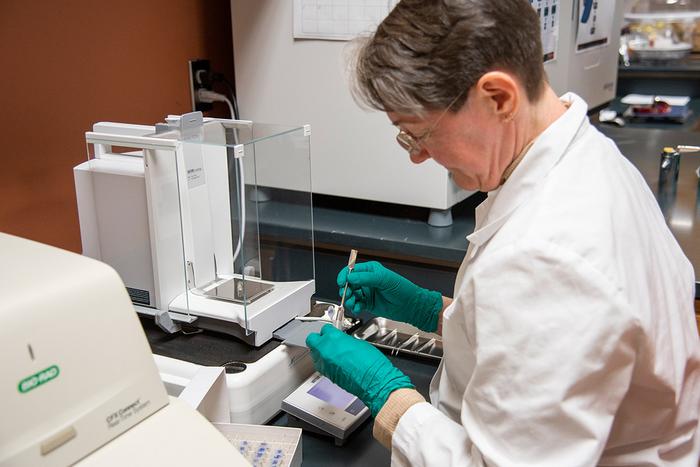Forensic researchers at the University of Tennessee Knoxville’s famous Anthropological Research Facility, popularly known as the “Body Farm,” have made headlines for decades in their discoveries of what happens to human bodies after death. Now, a multidisciplinary team—engineers, soil scientists, and biologists—digs in with them for a deeper look at what happens to the soil underneath a decomposing body. Their study, “Soil Elemental Changes During Human Decomposition,” published in June 2023 by PLOS One, could benefit investigators searching for human remains in remote or hard-to access-vegetated areas.

Credit: UT, Knoxville
Forensic researchers at the University of Tennessee Knoxville’s famous Anthropological Research Facility, popularly known as the “Body Farm,” have made headlines for decades in their discoveries of what happens to human bodies after death. Now, a multidisciplinary team—engineers, soil scientists, and biologists—digs in with them for a deeper look at what happens to the soil underneath a decomposing body. Their study, “Soil Elemental Changes During Human Decomposition,” published in June 2023 by PLOS One, could benefit investigators searching for human remains in remote or hard-to access-vegetated areas.
“This study was part of a larger project where we were investing environmental changes in the vicinity of a decomposing body,” said Jennifer DeBruyn, co-author and professor in the Herbert College of Agriculture Department of Biosystems Engineering and Soil Science (BESS). “Our bodies are concentrated in nutrients and other elements compared to the surrounding environment. As they break down, these nutrients are released into the environment, resulting in changes to soil and vegetation nearby.”
A greater understanding of how and when soil and vegetation changes in the presence of decomposing human remains may offer clues to both locating bodies and estimating how long they have been there.
To test their ideas, this study asks: What elements are released from the human body during decomposition and how does it influence the local soil environment?
“We have previously looked at the major elements of the body, namely carbon and nitrogen,” said DeBruyn, “But we know there are lots more in our bodies.”
The next most abundant elements in the body are sulfur, phosphorus, sodium, and potassium. As the soft tissues in test bodies decomposed, the team observed an expected pulse of these elements in the soils as they were released into the environment.
“What we were surprised to see was that we also had higher concentrations of calcium and magnesium than what we would expect from the input of the body alone,” said Stacy Taylor, lead author on the study and a postdoctoral researcher in DeBruyn’s lab. “While we do have calcium (Ca) and magnesium (Mg) in our bodies, much of it is tied up in our bones, which would take years or decades break down. Soils have capacity to bind cations like Ca2+ and Mg2+, so our hypothesis is that the changing conditions resulted in the release of these elements from the soil itself.”
They were also surprised to see an increase in some trace metals a few months into the soil testing, after soft tissues were largely decomposed.
“Again, the concentrations in soil were higher than what we would expect based on just what would be coming from the body,” said Taylor. “Decomposition fluids result in a gradual acidification of the soil over time, so our hypothesis is that as the pH was dropping, these trace metals were slowly being solubilized from mineral complexes in the soil.”
The big-picture take-away from their study could lead to new approaches in finding missing persons or in determining how long remains have been in a location.
“This study was an important documentation of the types of elements released during human decomposition and how they changed over time,” said DeBruyn. “It contributes to our broader understanding of local environmental changes during human decomposition, which may ultimately help us understand the timing of decomposition in cases where human remains are found outdoors.”
DeBruyn and her students and postdocs have been conducting research at the Anthropological Research Facility for over a decade, investigating the microbiological and environmental changes during human decomposition.
Their team for the study included DeBruyn, Taylor, and Michael Essington from BESS; Scott Lenaghan and Neal Stewart from the Center for Agricultural Synthetic Biology within the UT Institute of Agriculture; Amy Mundorff and Dawnie Steadman of the Forensic Anthropology Center, and Adrian Gonzalez, manager of the Water Quality Core Facility (WQCF) in the Department of Civil and Environmental Engineering.
The WQCF analyzed hundreds of soil samples that originated from underneath deceased human donors—those whose decision to volunteer their remains offers ongoing contribution to the furthering of this investigative science.
Journal
PLoS ONE




